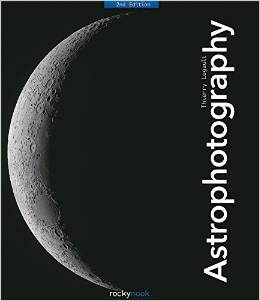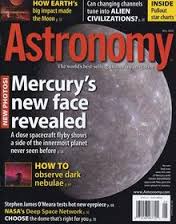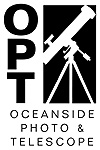Astronomy Links
Amateur astronomy is a rewarding hobby that is shared by a very small group of individuals. Being mostly self-taught, I've spent countless hours researching, reading, and learning from various resources. Below I have shared links to some of the resources that I have found the most useful on my journey.
Books and Magazines
|
Lessons from the Master: Current Concepts in Astronomical Image Processing
This is a great book for making the most of images you capture. It is written by various individuals and shares techniques and workflows for image processing and enhancement. It includes both DSO and Planetary image processing techniques. |
|
Building a Roll-Off Roof Observatory: A Complete Guide for Design and Construction
The author shares his own experiences building a roll-off roof observatory, complete with detailed designs and options for how to build your own. He covers the factors you should consider in advance, the building steps and process, and various design considerations. |
|
Getting Started: Long Exposure Astrophotography
A great book for anyone considering or just getting started with long exposure astrophotography. The author thoroughly covers the topic, from camera to telescopes, to exposures to processing, to software and hardware needed. The book mostly focuses on DSLR astrophotography, but the concepts easily apply to CCD imaging as well. The book is a bargain and well worth reading if you're just starting out. |
|
The Deep-Sky Imaging Primer
The author covers every aspect of deep-sky imaging with both DSLR and CCD cameras. This book is illustrated in full color and provides a great understanding of the fundamentals of deep-sky imaging, how to acquire images, and how to process them. It takes a deep dive into the technical details of imaging and is good for both novices and experienced images alike. I learned a great deal from this book and consider it an essential resource for anyone interested in deep-sky imaging. |
|
The 100 Best Astrophotography Targets: A Monthly Guide for CCD Imaging with Amateur Telescopes
When you're first getting started with astrophotography, one of the biggest challenges is deciding on the best imaging targets for a particular time of year. In this book, the author provides a day-by-day guide for the best targets in the sky on a particular night. He gives background on the target and makes suggestions on exposure and processing techniques. I've found this book particularly helpful when just getting started. |
|
Astrophotography by Thierry Legault
This is one of the most thorough books I've read covering all aspects of astrophotography. It covers all aspects, from the hardware you need to how to capture specific targets and is great for beginners and advanced images alike. It covers DSLR, Video/Webcam, and CCD astrophotography and discusses how to target planets, the moon, the sun, and deep sky targets. |
|
Sky and Telescope Magazine
Sky and Telescope magazine has been published since 1941 and labels itself as the "serious astronomer's magazine." I enjoy this magazine for its in-depth articles on science and astronomy topics, monthly night-sky charts, and product reviews. I find the articles to be in-depth, technical, and highly educational. It's a great magazine if you have more than a passing interest in astronomy. It is available in both a paper and digital edition. |
|
Astronomy Magazine
Astronomy Magazine has been published since 1973 and is the most read astronomy magazine in the world. Compared with Sky and Telescope, I find the articles to be a little "lighter" in nature. The articles are still in-depth and technical, but the overall content is designed to appeal to a broader audience. The magazine also includes great night-sky charts and product reviews, just like Sky and Telescope. This is a great magazine if you are just getting started in astronomy and are interested in learning more. |
Dealers and Manufacturers
|
Celestron
One of the two large manufacturers of consumer-grade telescopes. My current primary scope is a Celestron CGE PRO 1400 HD. I've owned both Meade and Celestron over the years and both offer great value for the price. Optics quality of Celestron scopes is excellent. |
|
Meade Instruments
The other large manufacturers of consumer-grade telescopes. My first "serious" telescope was a Meade LX200, which I still own some 20 years later. Many technical innovations in "GoTo" scopes came from Meade first. |
|
Oceanside Photo and Telescope
Oceanside Photo and Telescope is my favorite dealer of telescopes and accessories. They offer a huge selection of products from all manufacturers, a great website, a discount rewards program, quick shipping, and fantastic customer service. |
|
Santa Barbara Instruments Group
SBIG was one of the first manufacturers of CCD cameras for amateur astronomers. They make a wide assortment of cameras to fit any telescope and budget. I own an STF-8300M Pro package from them and couldn't be happier with it. They have top-notch support and their cameras are built to last. The are leaders in several innovations in amateur astrophotography such as off-axis guiding. |
|
Sky Shed
Sky Shed is a provider of plans for roll-off roof observatories. The plans are very reasonable to buy and they are accurate. I built my Sky Shed 10' x 10' observatory using these plans and I have minimal experience with construction. I'm very happy with the results. |
Software
As a Mac user, I tend to stick with astronomy applications that have native Mac versions. There are applications available that cover most anything you want to do. The Mac has gained a bigger foothold in astronomy the last several years and as a result there are many more native applications than there were a few years ago. That being said, there are a few really excellent packages that are only available for Windows. When the need arises, I use VirtualBox from Oracle to run Windows 7 in a virtual instance on my Mac. It works well in most cases and is only tricky if you're trying to interface with some older hardware devices.
- TheSkyX Professional (Mac/Windows) - a "do everything" virtual planetarium package that provides complete observatory control. The planetarium software forms the basis for the package, but it offers telescope control, session planning, mount refinement, camera control, focuser control, auto guiding, and observatory automation. Be warned --- it's not cheap --- but it's probably the most complete package out there.
- Astroplanner (Mac/Windows) - primarily designated as an astronomical observation planning software package, I can't say enough good things about this application. Yes, it's primarily a planner, but it excels in many so many other areas. There's not much that it can't do. It provides a wealth of information about each object, telescope control, journaling, and other information that goes into planning a session. Use it before you head out for the night and you'll have a productive observing/imaging session.
- Nebulosity (Mac/Windows) - image capture and pre-processing software. This application is purely geared toward image capture, pre-processing, and stacking. It doesn't pretend to be an end-all package to do everything, but what it does, it does very well using a simple interface that is easy for novices to learn and use. It's amazingly inexpensive compared to a lot of other image capture applications. Try it --- you can't go wrong.
- PHD Guiding (Mac/Windows) - "Push Here Dummy" provides simple and powerful auto-guiding for deep-sky imaging. It's the most popular auto-guiding software out there and it interfaces with many imaging applications (including Nebulosity, of course). It's simple. It's free. It does a phenomenal job. If you're a beginning imager, this should be your first stop for auto-guiding software.
- Photoshop (Mac/Windows) - I'll be the first to tell you I'm not a big Photoshop fan. It's expensive, difficult to learn, and massive overkill for the needs of most amateur astronomers. That being said, it does things that no other image processing package can do and some of those things are essential when working with astronomical images. One of the key features is that the software works well with 16-bit images and not many other packages do. There are some alternatives such as Pixelmator (Mac) and GIMP (Mac/Windows/Linux) that are gaining functionality, but you'll find that most astrophotographers use Photoshop. As such, there are more resources available for it.
- RegiStax (Windows) - there are a number of applications for planetary imaging stacking, but none come close to the power and simplicity of RegiStax. Sadly, it's Windows-only, but it runs great in VirtualBox. It's also free, which is probably one of the reasons that it's the most popular planetary image stacker available. The real power of RegiStax is in its "wavelet" functions to sharpen images. The application is a great stacker and wavelet processor, but you'll need a post-processing application like Photoshop to finish the job.
- DeepSkyStacker (Windows) - DeepSkyStacker is the equivalent of RegiStax for deep-sky imaging stacking and pre-processing. It is immensely popular and it's free. I've used it a little and it does a pretty good job, but I am more familiar with the workflow in Nebulosity and I seem to get better results there. It's work more experimentation in the future, however. Like RegiStax, it does its one function really well, so you'll need a post-processing application like Photoshop to finish the job.
Websites
Here are a collection of astronomy websites that I found useful and seem to revisit often.
- Cloudy Nights - Reviews of lots of products, but the real power is in the forums and community that it has built up over the years. If you have any questions or issues, post them here and you're bound to get a bunch of responses. It also makes for good reading on 'cloudy nights'.












